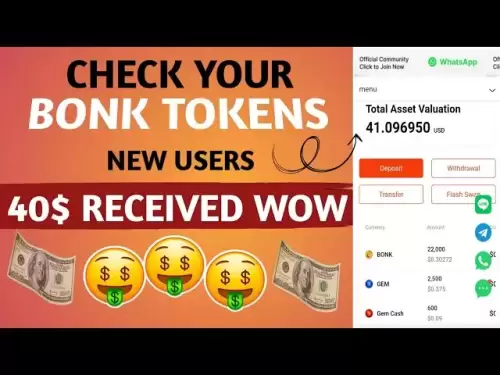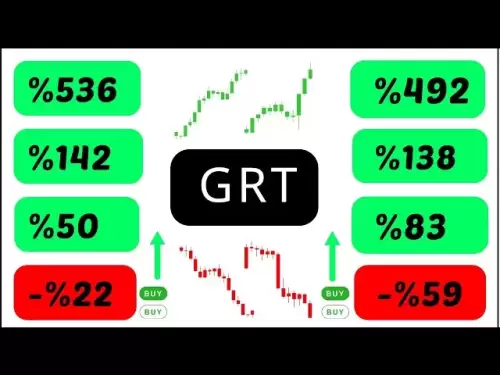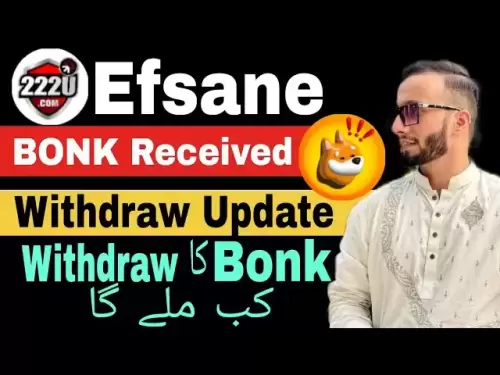-
 Bitcoin
Bitcoin $107,896.0459
2.21% -
 Ethereum
Ethereum $2,435.2616
0.04% -
 Tether USDt
Tether USDt $1.0004
-0.01% -
 XRP
XRP $2.2018
-0.04% -
 BNB
BNB $647.5191
0.76% -
 Solana
Solana $144.4128
0.58% -
 USDC
USDC $0.9999
-0.01% -
 TRON
TRON $0.2730
-0.32% -
 Dogecoin
Dogecoin $0.1660
1.16% -
 Cardano
Cardano $0.5723
-1.81% -
 Hyperliquid
Hyperliquid $37.4395
-0.04% -
 Bitcoin Cash
Bitcoin Cash $485.2395
7.09% -
 Sui
Sui $2.7770
0.33% -
 Chainlink
Chainlink $13.2388
-0.84% -
 UNUS SED LEO
UNUS SED LEO $9.0047
-0.11% -
 Stellar
Stellar $0.2431
-1.84% -
 Avalanche
Avalanche $17.7557
-1.65% -
 Toncoin
Toncoin $2.8566
-1.08% -
 Shiba Inu
Shiba Inu $0.0...01168
0.88% -
 Litecoin
Litecoin $84.9442
0.32% -
 Hedera
Hedera $0.1513
-1.26% -
 Monero
Monero $315.0784
-0.32% -
 Ethena USDe
Ethena USDe $1.0001
-0.04% -
 Polkadot
Polkadot $3.4120
-0.77% -
 Dai
Dai $0.9999
0.00% -
 Bitget Token
Bitget Token $4.3352
1.20% -
 Pi
Pi $0.6312
17.49% -
 Uniswap
Uniswap $6.9875
-0.83% -
 Pepe
Pepe $0.0...09694
-1.76% -
 Aave
Aave $259.5059
-1.43%
How to use tools to monitor the wallet movements of NFT whales?
NFT whales are major investors whose wallet activity can signal market trends, and tracking their moves via blockchain explorers or platforms like DappRadar helps traders anticipate shifts and opportunities.
Jun 25, 2025 at 09:35 pm
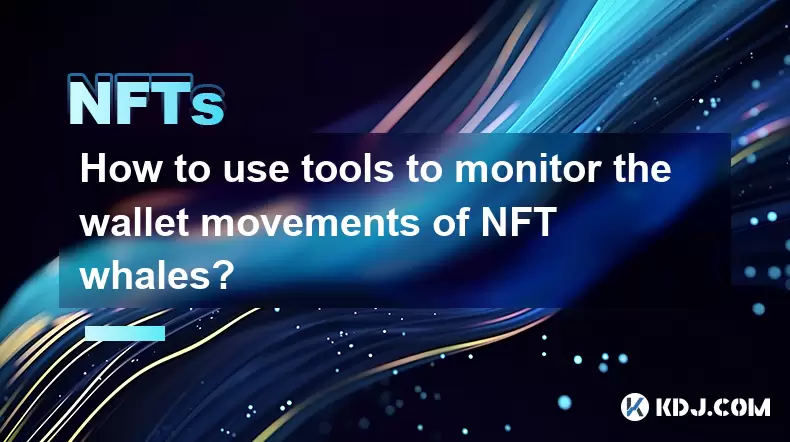
What Are NFT Whales and Why Monitor Their Wallets?
In the world of non-fungible tokens (NFTs), NFT whales refer to large-scale investors or entities that hold significant amounts of high-value digital assets. These individuals or groups often influence market trends through their buying, selling, and transferring activities. Monitoring their wallet movements can provide valuable insights into potential price shifts, emerging collections, and strategic investment opportunities. For traders and collectors, understanding how to track these actions is essential for staying ahead in a volatile market.
Choosing the Right Blockchain Explorers
To monitor NFT whale wallets effectively, one must first understand which blockchain networks host the NFTs they are interested in. Ethereum, Solana, Polygon, and Tezos are among the most popular blockchains supporting NFT ecosystems. Each has its own set of explorers tailored for tracking transactions and wallet balances.
- Etherscan is the go-to explorer for Ethereum-based NFTs.
- Solscan provides detailed analytics for Solana NFT holders.
- Polygonscan supports Polygon-based NFTs with robust transaction tracing capabilities.
These tools allow users to input a wallet address and view all associated NFT transfers, token balances, and recent activity logs. It's crucial to ensure that the explorer used matches the blockchain where the whale’s NFTs reside.
Utilizing NFT Tracking Platforms
Beyond standard blockchain explorers, specialized NFT tracking platforms offer enhanced features for monitoring whale behavior. DappRadar, OpenSea Analytics, and CoinGecko NFT aggregate data across multiple chains, providing real-time alerts and historical movement analysis. These platforms often highlight top wallets by net worth and showcase their latest trades.
For instance, DappRadar allows users to follow specific wallets and receive notifications when new NFTs are acquired or sold. This level of automation is particularly useful for those who want to stay updated without manually checking each wallet regularly. Additionally, some platforms integrate on-chain analytics dashboards, enabling users to visualize trends and volume spikes tied to particular addresses.
Setting Up Alerts and Notifications
Timely information is critical when tracking NFT whales. Most advanced tracking tools offer alert systems that notify users via email or app push notifications whenever a monitored wallet performs an action. To configure these alerts:
- Log into your preferred NFT analytics platform.
- Navigate to the wallet tracking section.
- Enter the whale wallet address you wish to monitor.
- Enable notifications for purchases, sales, and transfers.
Some platforms also support custom filters, allowing users to specify thresholds such as minimum NFT value or particular collections of interest. This ensures that only relevant updates are sent, reducing noise and improving efficiency.
Analyzing On-Chain Data Manually
For users who prefer a hands-on approach, manual analysis using raw blockchain data offers deeper insights. Tools like Blockchair, Blockchain.com Explorer, and Etherscan's API enable advanced users to query transaction histories programmatically. Developers can build custom scripts to parse and analyze whale movements across multiple wallets simultaneously.
This method typically involves:
- Extracting transaction data from a blockchain explorer.
- Filtering events related to NFT contracts (e.g., ERC-721 or ERC-1155 standards on Ethereum).
- Cross-referencing wallet interactions with known NFT marketplaces like OpenSea, LooksRare, or X2Y2.
Manual tracking may require knowledge of smart contract interactions and event logs, but it grants full control over the data being analyzed. This approach is especially beneficial for institutional investors or analysts seeking granular details not available through user-friendly platforms.
Integrating Whale Movement Insights Into Trading Strategies
Once you've established a system for tracking NFT whale wallets, the next step is incorporating this intelligence into actionable strategies. Some traders adopt a copy-whale approach, mimicking the purchases of well-known collectors in hopes of capitalizing on early moves. Others use whale activity as a sentiment indicator—a sudden sell-off by major holders might signal market fatigue, while consistent accumulation could imply confidence in a project.
It's important to note that whale behavior doesn't always equate to positive outcomes. Sometimes, whales may be rebalancing portfolios or exiting positions due to personal reasons unrelated to an asset’s intrinsic value. Therefore, cross-referencing whale data with other metrics like floor price trends, volume spikes, and social media buzz is recommended before making decisions.
Frequently Asked Questions
Q: Can I track NFT whale wallets across multiple blockchains at once?
Yes, platforms like DappRadar and CoinGecko NFT support multi-chain tracking, allowing users to monitor whale activity on Ethereum, Solana, Polygon, and more from a single interface.
Q: Are there risks associated with copying NFT whale trades?
While following whale movements can provide insights, it carries risks. Whales may engage in wash trading or manipulate markets, so it's crucial to conduct independent research before replicating any trade.
Q: How do I find verified NFT whale wallet addresses?
Verified whale addresses are often shared on NFT analytics platforms, community forums like Discord or Twitter, or tracked through public leaderboards on marketplaces like Rarity.tools or CryptoSlam.
Q: Is it possible to automate NFT whale tracking with bots?
Yes, developers can use APIs from platforms like Alchemy, Infura, or Moralis to build bots that automatically detect and report whale transactions in real time.
Disclaimer:info@kdj.com
The information provided is not trading advice. kdj.com does not assume any responsibility for any investments made based on the information provided in this article. Cryptocurrencies are highly volatile and it is highly recommended that you invest with caution after thorough research!
If you believe that the content used on this website infringes your copyright, please contact us immediately (info@kdj.com) and we will delete it promptly.
- Ethereum, ZK-Powered Bridges, and Cross-Chain Liquidity: A New Era?
- 2025-06-26 02:45:13
- Ruvi AI: The Breakout Star That Could Outshine Tron in 2025?
- 2025-06-26 02:45:13
- XRP Whales: Accumulation vs. Stalled Momentum - What's the Deal?
- 2025-06-26 02:50:12
- Moca Chain: The Layer 1 Blockchain Revolutionizing Digital Identity
- 2025-06-26 02:27:14
- Mega Matrix, Bitcoin, and Treasury Strategy: A New Era of Corporate Finance
- 2025-06-26 02:55:12
- SBI's QIP Issue: A Token of Prestige for Lead Arrangers
- 2025-06-26 02:31:57
Related knowledge
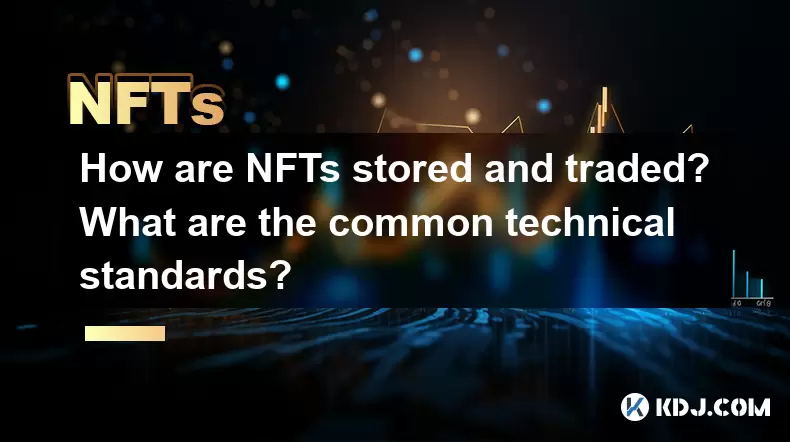
How are NFTs stored and traded? What are the common technical standards?
Jun 20,2025 at 08:49am
Understanding NFT Storage MechanismsNon-Fungible Tokens (NFTs) are digital assets that represent ownership of a unique item or piece of content, such as art, music, videos, or virtual real estate. The way NFTs are stored is crucial to their security and accessibility. Most NFTs are built on blockchain platforms like Ethereum, and the actual file—such as...
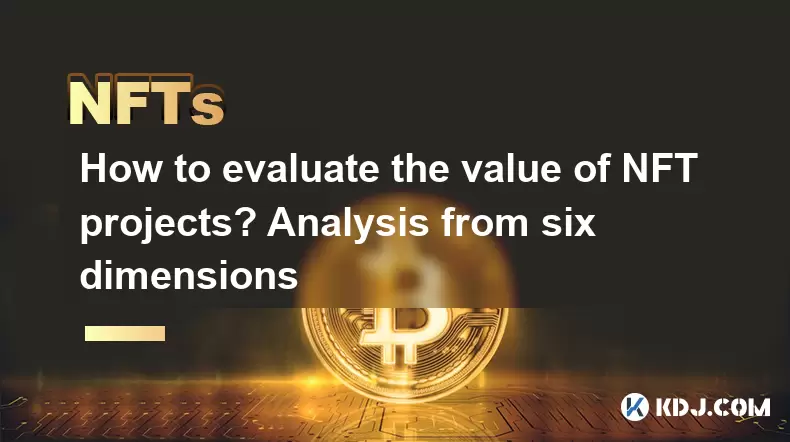
How to evaluate the value of NFT projects? Analysis from six dimensions
Jun 21,2025 at 02:28pm
1. Project Background and Team CredibilityEvaluating the value of NFT projects begins with a thorough understanding of its background and team composition. A credible project is usually backed by experienced developers, designers, and marketers who have a proven track record in blockchain or digital art industries. The presence of identifiable team memb...

What is the difference between NFT and digital collectibles? A must-read guide for beginners
Jun 19,2025 at 09:42pm
Understanding the Basics of NFTsNFTs, or Non-Fungible Tokens, are unique digital assets that represent ownership of a specific item or piece of content on the blockchain. Unlike cryptocurrencies such as Bitcoin or Ethereum, which are fungible and can be exchanged one-for-one, each NFT has distinct properties and cannot be directly replaced by another to...
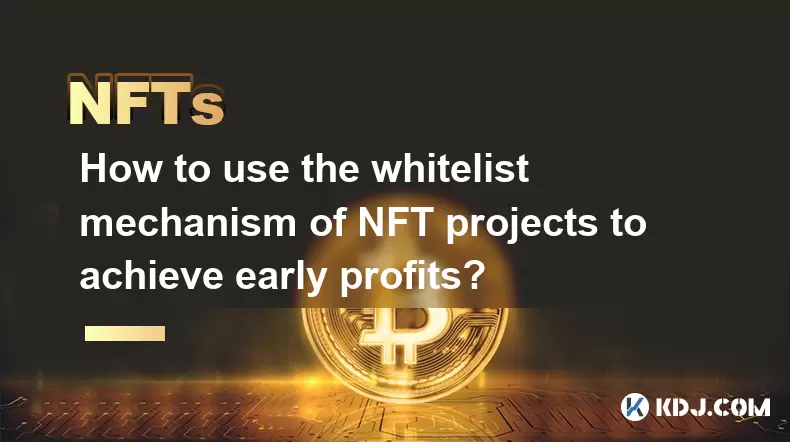
How to use the whitelist mechanism of NFT projects to achieve early profits?
Jun 21,2025 at 03:49am
Understanding the Whitelist Mechanism in NFT ProjectsThe whitelist mechanism is a popular strategy used by NFT project developers to allocate early access or exclusive minting rights to a select group of users. This system allows participants on the whitelist to mint NFTs before they are released to the general public, often at lower prices and with few...
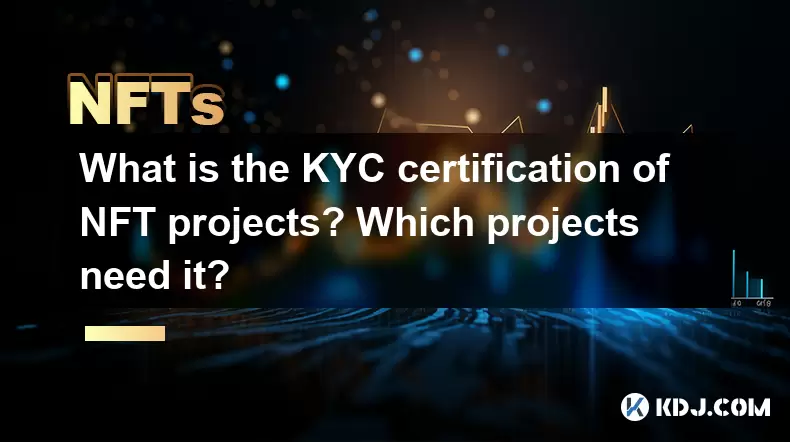
What is the KYC certification of NFT projects? Which projects need it?
Jun 21,2025 at 03:08pm
Understanding KYC Certification in the NFT SpaceKYC, or Know Your Customer, is a regulatory process used by businesses to verify the identity of their clients. In the context of NFT projects, KYC certification refers to the verification of user identities before they can participate in minting, trading, or selling NFTs on a platform. This practice is in...
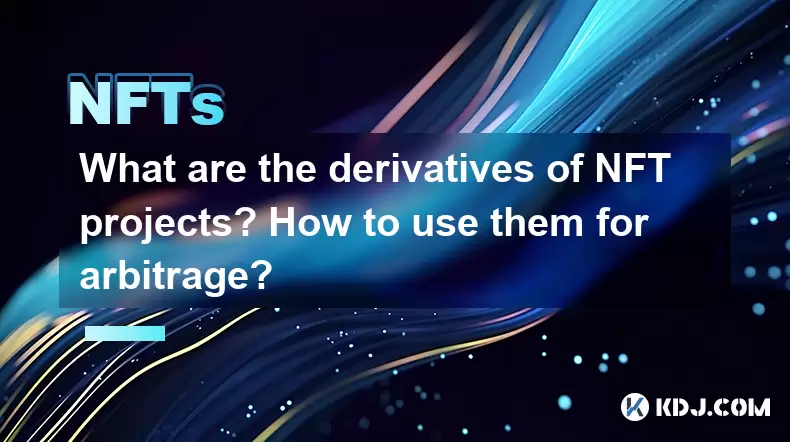
What are the derivatives of NFT projects? How to use them for arbitrage?
Jun 20,2025 at 06:14am
Understanding the Derivatives of NFT ProjectsNFTs, or non-fungible tokens, have evolved beyond simple digital collectibles. In recent years, derivatives of NFT projects have emerged as a new financial layer within the blockchain ecosystem. These derivatives are essentially financial instruments derived from the value and performance of underlying NFT as...

How are NFTs stored and traded? What are the common technical standards?
Jun 20,2025 at 08:49am
Understanding NFT Storage MechanismsNon-Fungible Tokens (NFTs) are digital assets that represent ownership of a unique item or piece of content, such as art, music, videos, or virtual real estate. The way NFTs are stored is crucial to their security and accessibility. Most NFTs are built on blockchain platforms like Ethereum, and the actual file—such as...

How to evaluate the value of NFT projects? Analysis from six dimensions
Jun 21,2025 at 02:28pm
1. Project Background and Team CredibilityEvaluating the value of NFT projects begins with a thorough understanding of its background and team composition. A credible project is usually backed by experienced developers, designers, and marketers who have a proven track record in blockchain or digital art industries. The presence of identifiable team memb...

What is the difference between NFT and digital collectibles? A must-read guide for beginners
Jun 19,2025 at 09:42pm
Understanding the Basics of NFTsNFTs, or Non-Fungible Tokens, are unique digital assets that represent ownership of a specific item or piece of content on the blockchain. Unlike cryptocurrencies such as Bitcoin or Ethereum, which are fungible and can be exchanged one-for-one, each NFT has distinct properties and cannot be directly replaced by another to...

How to use the whitelist mechanism of NFT projects to achieve early profits?
Jun 21,2025 at 03:49am
Understanding the Whitelist Mechanism in NFT ProjectsThe whitelist mechanism is a popular strategy used by NFT project developers to allocate early access or exclusive minting rights to a select group of users. This system allows participants on the whitelist to mint NFTs before they are released to the general public, often at lower prices and with few...

What is the KYC certification of NFT projects? Which projects need it?
Jun 21,2025 at 03:08pm
Understanding KYC Certification in the NFT SpaceKYC, or Know Your Customer, is a regulatory process used by businesses to verify the identity of their clients. In the context of NFT projects, KYC certification refers to the verification of user identities before they can participate in minting, trading, or selling NFTs on a platform. This practice is in...

What are the derivatives of NFT projects? How to use them for arbitrage?
Jun 20,2025 at 06:14am
Understanding the Derivatives of NFT ProjectsNFTs, or non-fungible tokens, have evolved beyond simple digital collectibles. In recent years, derivatives of NFT projects have emerged as a new financial layer within the blockchain ecosystem. These derivatives are essentially financial instruments derived from the value and performance of underlying NFT as...
See all articles




















